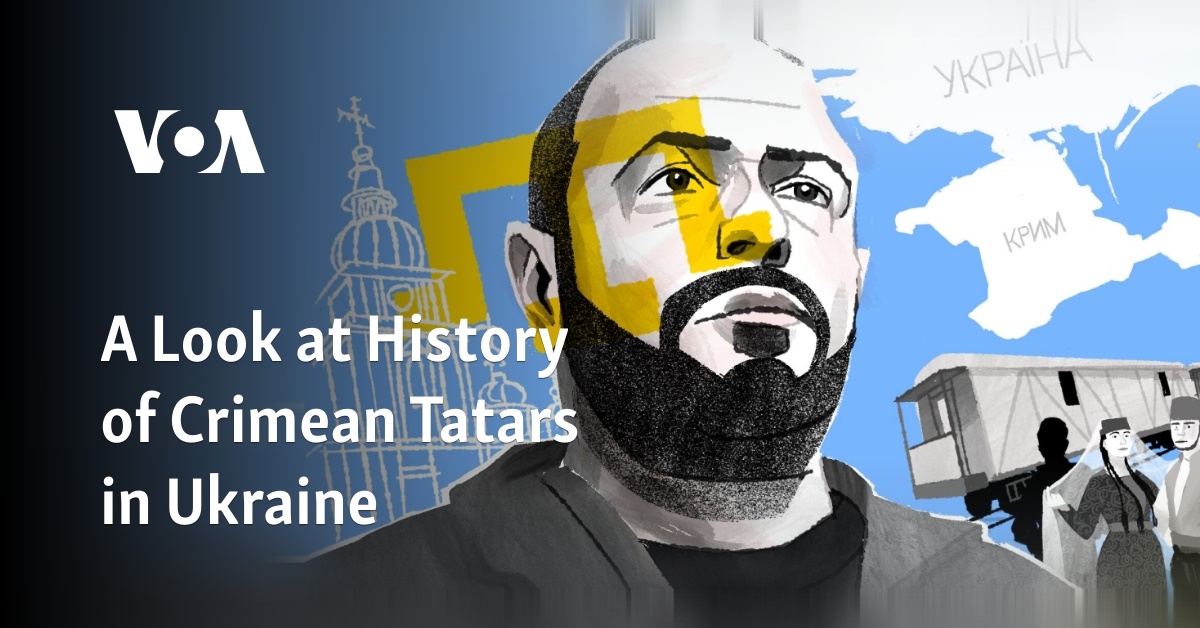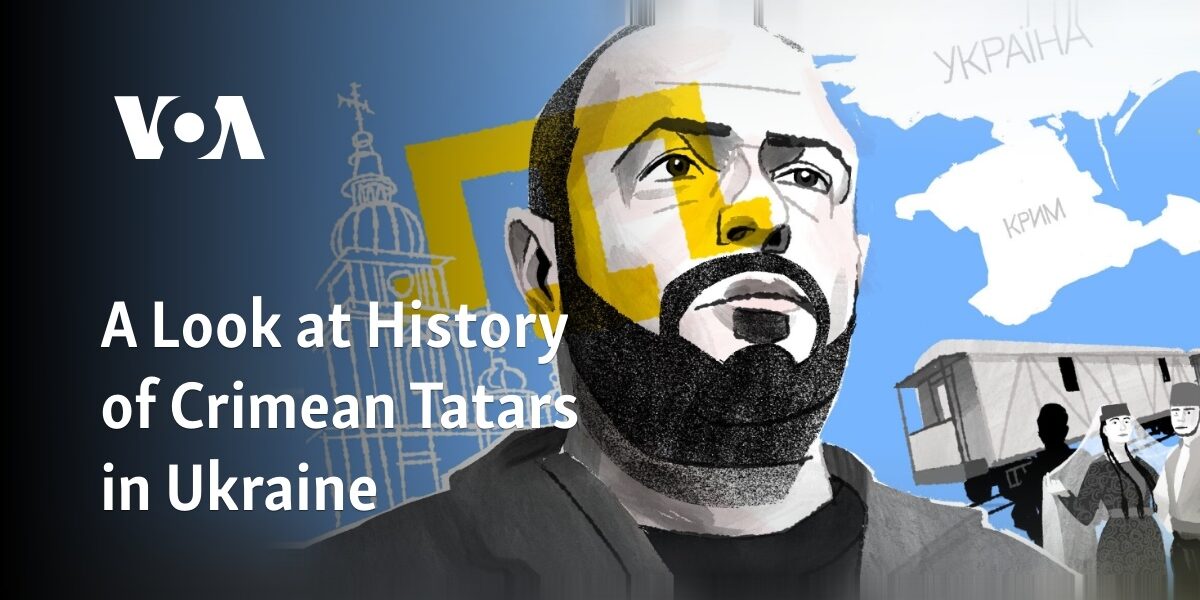
The appointment of Rustem Umerov as Ukraine’s defense minister in September 2023 was widely praised both domestically and internationally.
Recognized for his young age and clean reputation, the 41-year-old has served as a prominent mediator in discussions with Russia. However, what has garnered the most attention is Umerov’s heritage as a Crimean Tatar, highlighting a frequently neglected aspect of Ukraine’s Native past.
The region of Crimea has a rich past of human settlement, first by the Tauri and Scythian communities, then as a Greek and eventually Roman colony.
During the medieval period, the peninsula saw rule by the Khazar Empire, Byzantium, the Kyivan Rus, and the Republic of Genoa, as well as invasions and settlements by Goths, Huns, Bulgars, Jews, Turks, Armenians, and more. With the arrival of the Mongol Golden Horde and the adoption of Islam in the 14th century, most of these diverse populations assimilated to the Turkic-speaking Cuman-Kipchak majority, forming the Crimean Tatar identity.
In the 15th century, the Tatars broke away from Mongol control and joined forces with the Ottoman Empire.
Palaces and ports
The Crimean Khanate, a semi-autonomous state, was a dominant and prosperous force in Eastern Europe. It boasted magnificent palaces and bustling port towns. However, a significant portion of its wealth was acquired through the trade of slaves to the Middle East. This resulted in frequent raids to capture slaves, causing tensions with neighboring countries such as the Polish-Lithuanian Commonwealth and Russian Empire.
During these conflicts, the Cossacks, considered to be the early version of the Ukrainian state, emerged in disputed regions. They engaged in battles against the Tatars and also formed alliances with them to oppose other dominant forces. However, as the Ottoman Empire weakened in the 18th century and Russia emerged victorious in the Russo-Turkish War, the Khanate was left vulnerable. In 1783, Catherine II claimed the entire peninsula as part of the Taurida Oblast under the Russian Empire, disregarding their treaty that promised Crimean independence.
The Tatars were mistreated under Russian rule. The ruling governments viewed them as unloyal and throughout the following century, each new war in the area led to more persecution.
Hundreds of thousands of Tatars were expelled or pressured to leave, with their lands confiscated and Russians resettled in their stead, while Tatar language and culture were suppressed. Nevertheless, at the end of the nineteenth century, Tatars still made up over one-third of Crimea’s population and had begun to form a national movement like many others in Europe.
are all forms of systematic violence
Hunger, expulsion, and aggression are all examples of organized violence.
During World War I, as the Russian Empire was disintegrating, the Crimean People’s Republic declared itself as the first democratic republic in the Muslim world in December 1917. It was acknowledged by the Central Rada of the Ukrainian People’s Republic before both were eventually overthrown by the Bolshevik army.
During the first ten years of Soviet control in Crimea, Tatars, along with Ukrainians and other groups, suffered from famine, deportation, and violence. The region experienced famines in the early 1920s and later due to Stalin’s forced collectivization.
During the Nazi invasion of the peninsula in 1941, numerous Tatars were either killed, forced out of their homes, or sent to prison camps. However, their greatest challenge was still ahead. By offering the possibility of freedom from Soviet control, the German occupiers were able to convince some Tatars to join their cause as volunteer battalions, a tactic they used with other ethnic groups such as the Russians. Despite this, the majority of Tatars resisted the Nazis and some even fought alongside the partisans and the Red Army, with six receiving the prestigious title of Hero of the Soviet Union.
Stalin accuses Tatars of being traitors.
However, after the peninsula was regained in 1944, Stalin labeled the Tatars as traitors and commanded for the entire population to be relocated – a significant event that is referred to as the Sürgün, or exile, in the Tatar language.
In a span of 10 days from the initial order, almost all Tatars were forced onto cramped and unclean livestock trains and taken to faraway areas in Uzbekistan and Russia. Out of the 191,000 who were deported, around 8,000 lost their lives during the journey. The survivors not only had to endure harsh working conditions with minimal nourishment and healthcare, but they were also labeled as “special settlers” and forbidden from leaving their designated deportation location.
The autonomous status of Crimea was taken away and it became subject to a large-scale resettlement by Russians, who occupied the homes that were left behind by the Tatars.
Even after Soviet leader Nikita Khruschev denounced Stalin in 1956 and lifted their “special settler” status, the deportees were still unable to return to the peninsula that had been given to the Ukrainian Soviet Socialist Republic.
The Crimean Tatar identity was officially eradicated, unlike other deported groups, and its people were classified with the Central Asian Tatars who originated from Tatarstan, a region belonging to Russia. Those who returned to Crimea faced challenges in obtaining residency permits and finding housing.
The Soviet government officially permitted the return of the Crimean Tatars in 1989, shortly before its collapse, following the emergence of a Crimean Tatar movement and multiple public acts of self-immolation to protest ongoing injustices.
In 1991, approximately 150,000 Tatars returned to their homeland. Throughout the years, the Tatar movement had established strong connections with other activists and ethnic groups. Due to their past experiences under Russian authority, the majority of Tatars chose to align themselves with Ukraine for their future.
In 1991, during the independence referendum, Crimea voted alongside other regions in Ukraine. The Tatar vote played a crucial role in achieving a small majority in favor of independence. Over the next twenty years, more Crimean Tatars returned, increasing the population to over 250,000. Despite facing challenges such as bureaucratic barriers, discrimination from Russian-speaking locals, and ineffective government, they worked towards restoring their communities and establishing institutions like the Mejlis council. This council was officially recognized by the Ukrainian government as the representative body for Crimean Tatars in 1999.
Progress is halted by the occupation of Russia.
In 2014, Russia’s unauthorized takeover caused a significant halt in the progress of cultural revival. During the occupation, the Mejlis was declared illegal, mosques and schools were closed, and public gatherings were prohibited.
Tatar individuals are subject to unjust imprisonment, monitoring, and violence from Russian officials, and are also forced to join the Russian military. Many have escaped to areas of Ukraine that are not under Russian control. In 2014, the Ukrainian government officially recognized Crimean Tatars as an Indigenous group and acknowledged the Sürgün as a genocide.
Many individuals have relocated to uninhabited regions in Ukraine, where the government has acknowledged the Tatars as Indigenous and observes the Sürgün as a form of genocide.
Despite the fact that most Crimean Tatars still reside in the occupied peninsula where their cultural expression is suppressed, the existence of two national minorities in Ukraine’s highest military ranks serves as a reminder of the varied heritage that is currently at risk due to Russia’s unprovoked invasion.
Source: voanews.com




